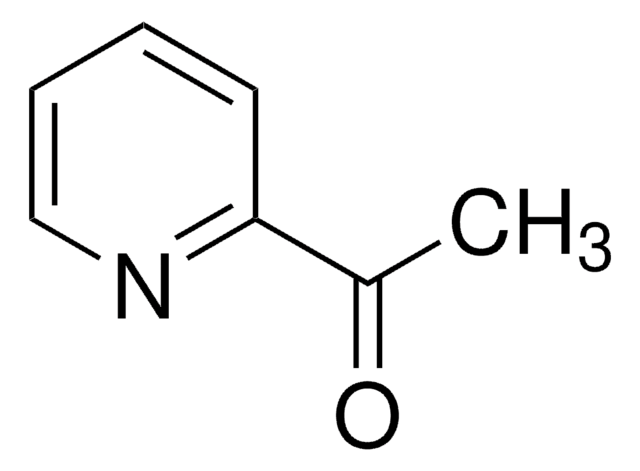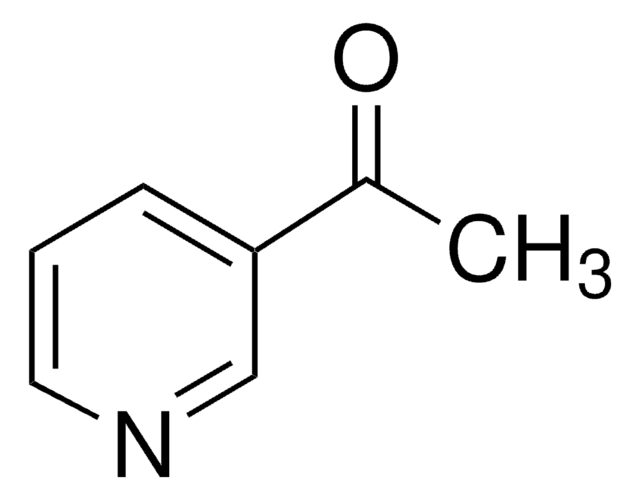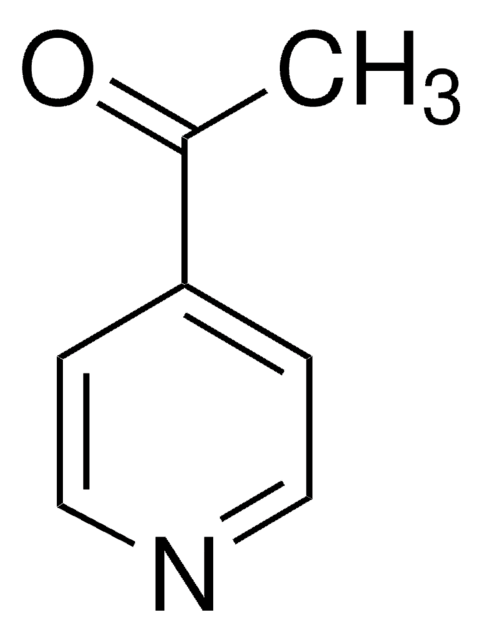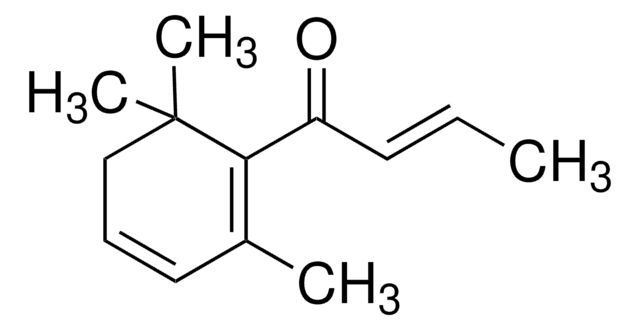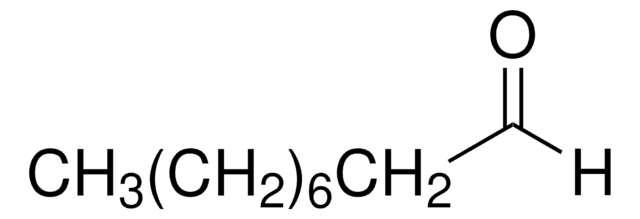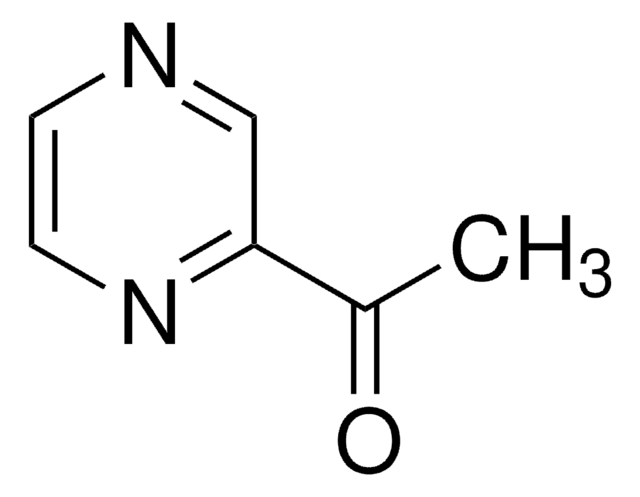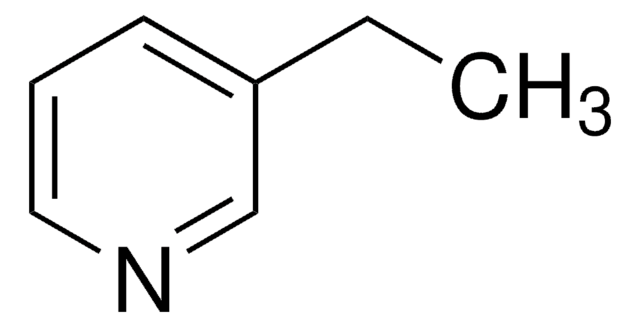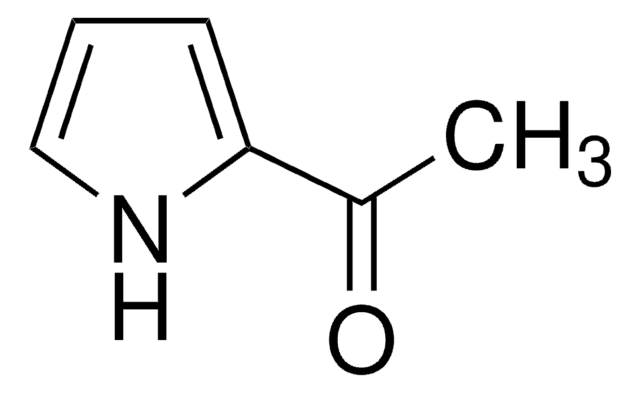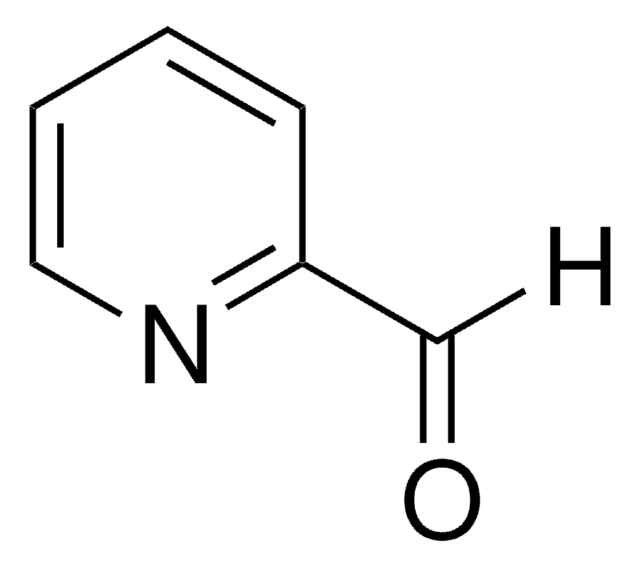W342408
3-Acetilpiridina
≥98%, FG
Sinónimos:
Metil 3-piridil cetona
About This Item
Fragrance grade
Halal
Kosher
meets purity specifications of JECFA
Productos recomendados
biological source
synthetic
Quality Level
grade
FG
Fragrance grade
Halal
Kosher
agency
follows IFRA guidelines
meets purity specifications of JECFA
reg. compliance
EU Regulation 1223/2009
EU Regulation 1334/2008 & 178/2002
assay
≥98%
impurities
≤0.5% Water (Karl Fischer)
refractive index
n20/D 1.534 (lit.)
bp
220 °C (lit.)
mp
11-13 °C (lit.)
density
1.102 g/mL at 25 °C (lit.)
application(s)
flavors and fragrances
documentation
see Safety & Documentation for available documents
food allergen
no known allergens
fragrance allergen
no known allergens
organoleptic
nutty; sweet
SMILES string
CC(=O)c1cccnc1
InChI
1S/C7H7NO/c1-6(9)7-3-2-4-8-5-7/h2-5H,1H3
InChI key
WEGYGNROSJDEIW-UHFFFAOYSA-N
¿Está buscando productos similares? Visita Guía de comparación de productos
Categorías relacionadas
Application
- Identificación de compuestos antioxidantes y marcadores de sabor en el café Kalosi-Enrekang arábica procesado utilizando diferentes métodos de tratamiento poscosecha: en este estudio se explora el impacto de varios procesos posteriores a la cosecha en las propiedades antioxidantes y el perfil de sabor del café Kalosi-Enrekang arábica, poniendo el foco en la 3-acetilpiridina como marcador clave del sabor. La investigación tiene como objetivo mejorar la calidad del café y la satisfacción del consumidor a través de técnicas de procesamiento optimizadas (Yulianti et al., 2024).
signalword
Danger
hcodes
Hazard Classifications
Acute Tox. 3 Oral - Skin Irrit. 2
Storage Class
6.1C - Combustible acute toxic Cat.3 / toxic compounds or compounds which causing chronic effects
wgk_germany
WGK 1
flash_point_f
219.2 °F - closed cup
flash_point_c
104 °C - closed cup
ppe
Eyeshields, Faceshields, Gloves, type ABEK (EN14387) respirator filter
Elija entre una de las versiones más recientes:
¿Ya tiene este producto?
Encuentre la documentación para los productos que ha comprado recientemente en la Biblioteca de documentos.
Los clientes también vieron
Nuestro equipo de científicos tiene experiencia en todas las áreas de investigación: Ciencias de la vida, Ciencia de los materiales, Síntesis química, Cromatografía, Analítica y muchas otras.
Póngase en contacto con el Servicio técnico